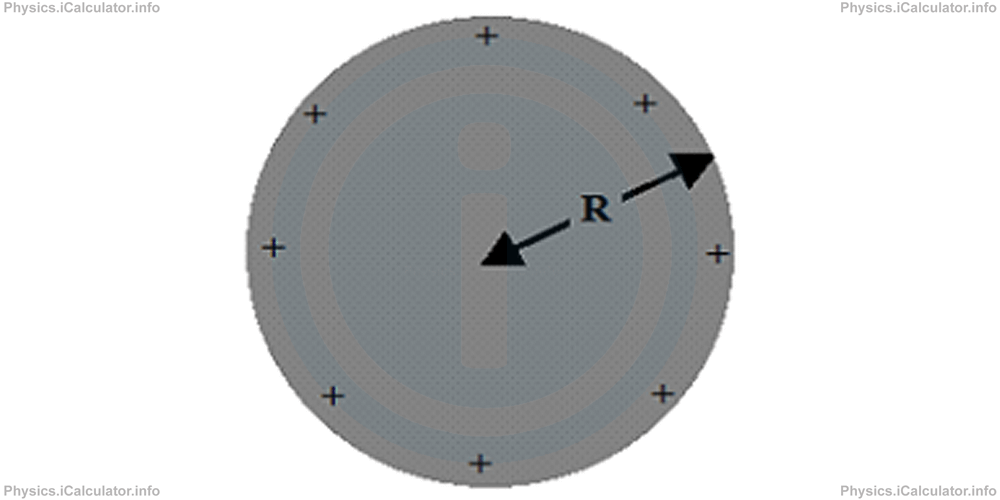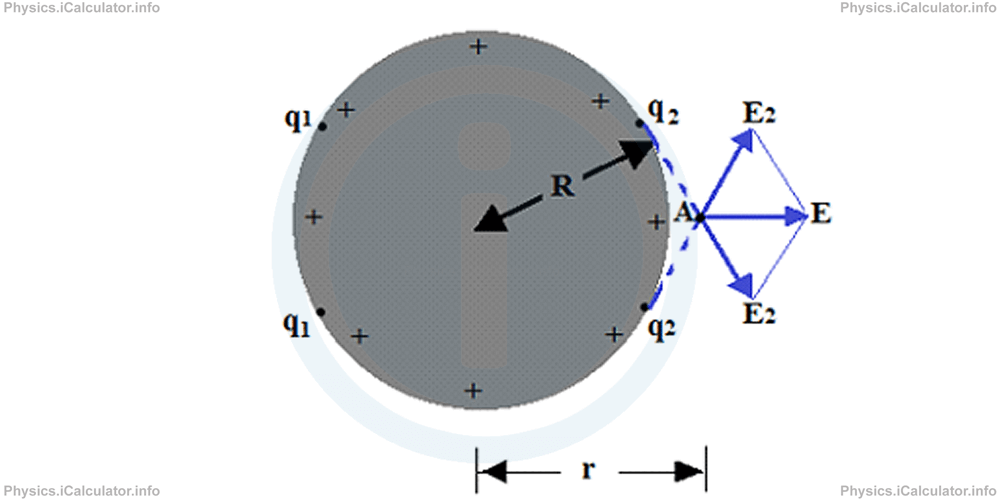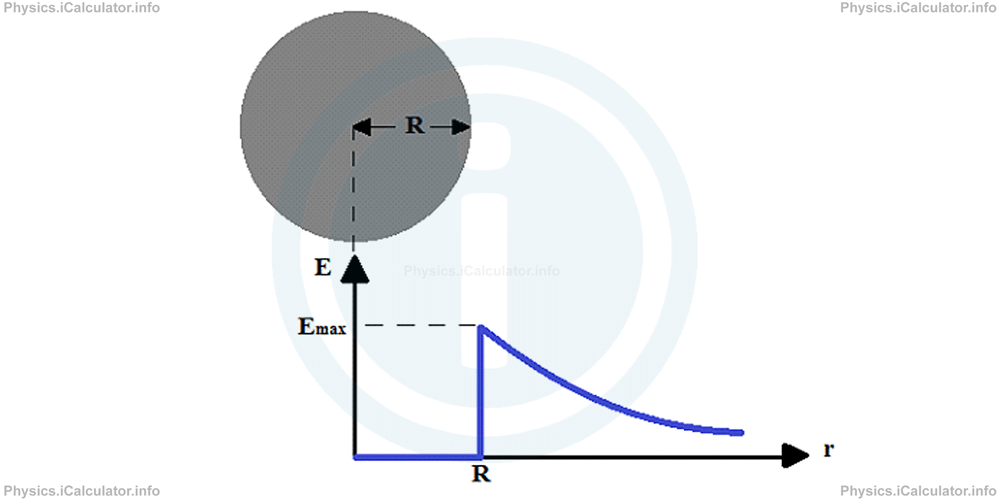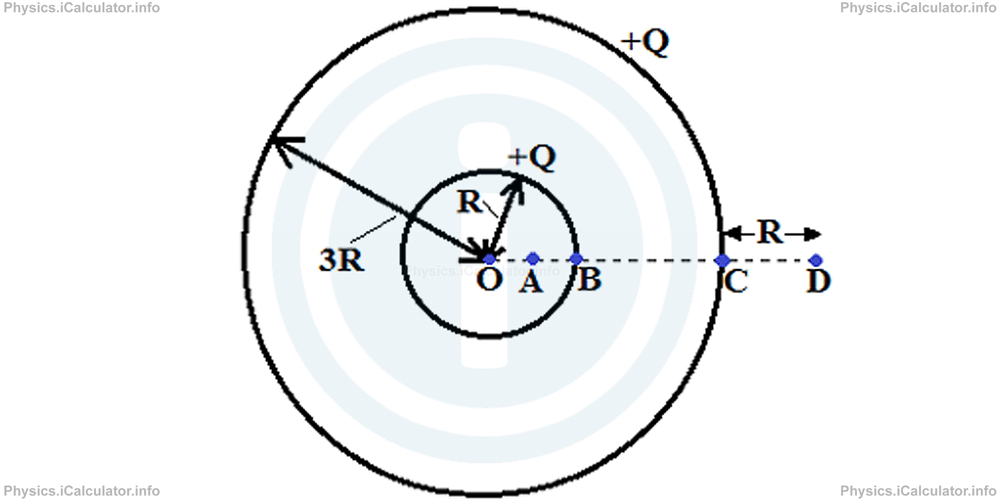Menu
Physics Lesson 14.3.5 - Electric Field on a Charged Sphere
Please provide a rating, it takes seconds and helps us to keep this resource free for all to use
Welcome to our Physics lesson on Electric Field on a Charged Sphere, this is the fifth lesson of our suite of physics lessons covering the topic of Electric Field, you can find links to the other lessons within this tutorial and access additional physics learning resources below this lesson.
Electric Field on a Charged Sphere
We have explained in the previous tutorials that an object remains permanently charged if it contains only one type of extra charge. Also, we have stated that all charges distribute the outer part of object, leaving the inner part neutral. This is because like charges repel each other as far as possible.
Now that we know more about electric field, it is easy to understand that this phenomenon brings concentric electric field lines as those shown in the first part of this tutorial.
Since a sphere is regular in all directions, a charged conducting sphere of radius R with a uniform charge Q (let's assume it as positive), has a regular distribution of charged throughout the outer surface, as shown in the figure below.

To find the electric field of the charged sphere at any point in the space, we assume that the charge is composed by many point charges q1, q2, q3, on the upper hemisphere and symmetrically, q1, q2, q3, on the lower hemisphere of the sphere. Thus, we obtain the following figure for the resultant electric field at any point (for illustration we have taken a point A):

Therefore, the resultant electric field vector at the point A is the vector E, which is the vector sum of all vectors E2 in this point, as shown in the figure above. The vector sum is in the radial direction, pointing out of the sphere. The same thing can be said for a negatively charged sphere as well. The only difference is that the electric field resultant vectors point towards the centre of sphere.
The above conclusions are proofs of the fact that electric field lines for a uniform object (a point charge or a charged sphere) have a radial direction, away from the sphere when the sphere is positively charged and towards the centre of sphere when it is negatively charged, as discussed earlier.
As the study of electric field on a charged sphere involves the same approach as for a point charge, the formula of electric field must be the same as well. Thus, the electric field produced by a charged sphere Q on a point of the space, which is at distance r from the centre of the sphere, is:
The graph below shows the relationship between the electric field on a charged sphere and the distance from the centre of circle, r:

The above graph, is interpreted as follows:
When distance from centre of sphere is from 0 to R, that is for all points inside the sphere, the electric field is zero. When distance from centre is R, the electric field takes the maximum value. Then, with the increase in distance, electric field decreases until it becomes zero (at the infinity).
Example 3
Two spherical concentric shells of radii R and 3R are placed as shown in the figure. Determine the electric fields at the points O, A, B, C and D if each spherical shell carries a charge of +Q.

Solution 3
The electric field at any point is the vector sum of all electric field vectors produced by each sphere at that point.
The points O and A are inside both spherical shells, so their electric field is zero as
= 0 + 0
=0
The point B is inside the large spherical shell and on the surface of the small shell. Thus, the electric field at this point is
= 0 + 1/4πϵ0 × Q/R2
= Q/4πϵ0 R2
The point C is out of the small spherical shell and on the surface of the large spherical shell, at a distance of 3R from the centre. Therefore, the net electric field at this point is
= 1/4πϵ0 × Q/(3R)2 + 1/4πϵ0 × Q/(3R)2
= 2Q/4πϵ0 × 9R2
= Q/18πϵ0 R2
The point D is out of both spherical shells, at distance 3R + R = 4R from the centre. Therefore, the net electric field at this point is
= 1/4πϵ0 × Q/(4R)2 + 1/4πϵ0 × Q/(4R)2
= 2Q/4πϵ0 × 16R2
= Q/32πϵ0 R2
As you see, the magnitude of electric field decreases drastically with the increase in distance from the charged objects.
You have reached the end of Physics lesson 14.3.5 Electric Field on a Charged Sphere. There are 6 lessons in this physics tutorial covering Electric Field, you can access all the lessons from this tutorial below.
More Electric Field Lessons and Learning Resources
Whats next?
Enjoy the "Electric Field on a Charged Sphere" physics lesson? People who liked the "Electric Field lesson found the following resources useful:
- Charged Sphere Feedback. Helps other - Leave a rating for this charged sphere (see below)
- Electrostatics Physics tutorial: Electric Field. Read the Electric Field physics tutorial and build your physics knowledge of Electrostatics
- Electrostatics Revision Notes: Electric Field. Print the notes so you can revise the key points covered in the physics tutorial for Electric Field
- Electrostatics Practice Questions: Electric Field. Test and improve your knowledge of Electric Field with example questins and answers
- Check your calculations for Electrostatics questions with our excellent Electrostatics calculators which contain full equations and calculations clearly displayed line by line. See the Electrostatics Calculators by iCalculator™ below.
- Continuing learning electrostatics - read our next physics tutorial: Electric Potential Energy
Help others Learning Physics just like you
Please provide a rating, it takes seconds and helps us to keep this resource free for all to use
We hope you found this Physics lesson "Electric Field" useful. If you did it would be great if you could spare the time to rate this physics lesson (simply click on the number of stars that match your assessment of this physics learning aide) and/or share on social media, this helps us identify popular tutorials and calculators and expand our free learning resources to support our users around the world have free access to expand their knowledge of physics and other disciplines.